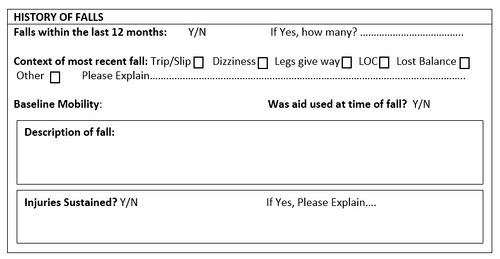The 30-Second Trick For Dementia Fall Risk
The Ultimate Guide To Dementia Fall Risk
Table of ContentsThe Definitive Guide for Dementia Fall RiskDementia Fall Risk for DummiesThe Ultimate Guide To Dementia Fall RiskSome Known Incorrect Statements About Dementia Fall Risk The Dementia Fall Risk Statements
You may be worried since you've had a loss before or because you have actually observed you're starting to really feel unsteady on your feet. You could have discovered adjustments to your health and wellness, or just seem like you're reducing a little. Whatever the factor, it isn't unusual to come to be careful and shed confidence, and this can quit you doing the things you made use of to do and make you feel extra isolated.If you have actually had a fall or you have actually started to feel unstable, tell your medical professional even if you really feel fine or else. Your doctor can inspect your equilibrium and the way you stroll to see if renovations can be made. They may have the ability to refer you for a falls danger analysis or to the falls avoidance solution.
This information can be acquired via interviews with the individual, their caretakers, and an evaluation of their clinical records. Begin by asking the individual regarding their background of falls, consisting of the frequency and circumstances of any type of current drops. Dementia Fall Risk. Inquire about any type of flexibility problems they may experience, such as unstable or trouble walking
Conduct a detailed evaluation of the person's drugs, paying particular interest to those understood to raise the risk of falls, such as sedatives or medicines that reduced blood stress. Establish if they are taking multiple medications or if there have been current adjustments in their drug routine. Assess the individual's home atmosphere for prospective threats that can increase the risk of falls, such as poor lighting, loose rugs, or lack of grab bars in the restroom.
Not known Details About Dementia Fall Risk
Overview the individual with the fall risk analysis kind, discussing each inquiry and tape-recording their responses accurately. Calculate the total danger rating based on the reactions given in the evaluation kind.
This plan might include workout programs to improve stamina and equilibrium, medicine changes, home adjustments, and references to other experts as required. On a regular basis keep track of the person's progress and reassess their danger of drops as needed. Customize the treatment plan based on adjustments in their health condition or home atmosphere. Provide ongoing education and learning and assistance to promote safety and decrease the threat of drops in their daily living activities.
Lots of researches helpful site have actually revealed that physical therapy can assist to decrease the danger of falling in adults ages 65 and older. In a new research (that looked at falls risk in women ages 80 and older), researchers calculated the economic impact of picking physical treatment to stop drops, and they located that doing so conserves $2,144, including all the covert costs of your time, pain, missed out on life occasions, and the bucks paid for services.
Little Known Facts About Dementia Fall Risk.
Examining your heart rate and blood pressure dimensions at rest and while you transform settings (from resting or lying to standing). A simple examination of your thinking (cognitive) capacities. Evaluating your equilibrium, stamina, and strolling capability. A straightforward vision test. Assessing your feet and shoes. A imp source home safety evaluation. Based on the evaluation results, your physical therapist will create a plan that is customized to your specific requirements.
Older grownups who have problem strolling and speaking at the very same time are at a greater threat of falling. Dementia Fall Risk. To assist raise your safety during daily activities, your physical specialist might develop a training program that will certainly test you to maintain standing and walking while you do an additional job. Instances consist of strolling or standing while counting in reverse, having a conversation, or bring a bag of grocery stores
Your physical therapist also can identify which activities you must stay clear of to remain secure. Community-based drops avoidance programs help people to: Lower their anxiety of dropping. Establish objectives for increasing their physical task. Make their homes more secure. Work out more to increase their strength and balance. These programs typically are led by volunteer trains.
Top Guidelines Of Dementia Fall Risk

Measles, or rubeola, is a very transmittable, acute viral infectious disease triggered by the measles virus. Some individuals assume of measles as simply a breakout and fever that improves in a few days; however, measles can create significant health and wellness issues, particularly in children younger than 5-years-old. The ideal defense against measles is the measles, mumps, and rubella (MMR) vaccine.
Falls are a typical reason of injury among older grownups.
The Greatest Guide To Dementia Fall Risk

She has no history of falls, her stride is steady, and she voids with no problems. The previous registered nurse states that she calls for assistance to the restroom when she needs to go.
Instances of usual loss interventions/measures consist of: Making certain a person's essential items are within reach. Beyond comprehending just how to make use you could try here of the Johns Hopkins Loss Threat Analysis Device, it's vital that centers integrate its use into a more comprehensive fall avoidance strategy.